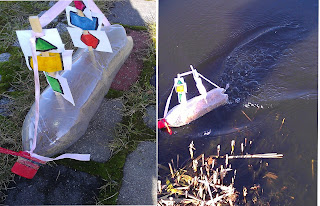Maria 3y. 7m.
 For our English “lessons” we organized a special so called “English Zone”,
where we have UK’s map, English books, an envelope with cards for articulatory
gymnastics, different animals’ masks and other requisite. This all is needed for our fun lessons, where
the majority of exercises are done by performing some actions like running,
jumping, drawing, modeling etc. But the most adorable part of the English
studies (except for catch-up game, of course) is singing and finger-playing.
Maria learns the nursery rhymes one by one and does it with pleasure
remembering the words and repeating them all through the day. here is the list of her most favourite songs:
For our English “lessons” we organized a special so called “English Zone”,
where we have UK’s map, English books, an envelope with cards for articulatory
gymnastics, different animals’ masks and other requisite. This all is needed for our fun lessons, where
the majority of exercises are done by performing some actions like running,
jumping, drawing, modeling etc. But the most adorable part of the English
studies (except for catch-up game, of course) is singing and finger-playing.
Maria learns the nursery rhymes one by one and does it with pleasure
remembering the words and repeating them all through the day. here is the list of her most favourite songs:
These two songs we sing and move the respective transport mean on our UK
map and then make particular exercise such as drawing or gluing or making
articulatory gymnastics.
Excellent finger/body play!
Very good when one needs to study parts of the body
Absolutely top hit when studying colours
And of course the lovely classics such as:
8. Old Macdonald Had a Farm 10. London Bridge is Falling Down
The most favourite songs are definitely those, which are sung by the
children.























